Napoleon on the Métro
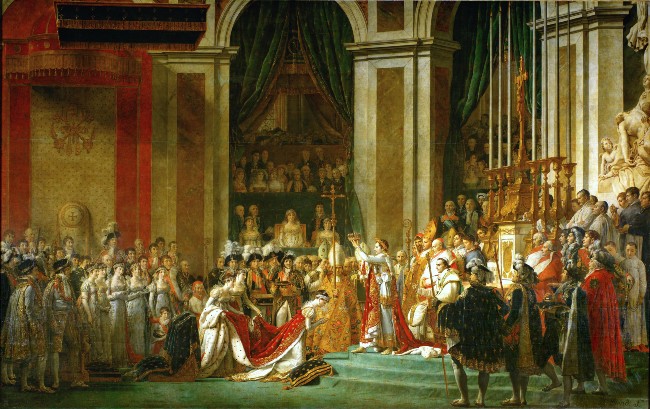

- SUBSCRIBE
- ALREADY SUBSCRIBED?
BECOME A BONJOUR PARIS MEMBER
Gain full access to our collection of over 5,000 articles and bring the City of Light into your life. Just 60 USD per year.
Find out why you should become a member here.
Sign in
Fill in your credentials below.
Napoleon knew the value of recognition. A soldier, he said, “will fight long and hard for a bit of colored ribbon.” The great man sought much grander honors for himself, so he would be pleased to know that posterity remembers him, especially in Paris, and not just in such great monuments as the Invalides, the Arc de Triomphe and the huge bronze column towering above the Place Vendôme. This year, the 200th anniversary of his death, is a good moment to reflect that of the 300+ metro stations in the city, more than 20 have names which are connected to him.

Place Vendôme. Photo credit: Giorgio Galeotti/ Flickr
He would be proudest of those named after his great battle victories. Taken chronologically, those recalling his Italian Campaign in the 1790s come first and the Battle of Rivoli in January 1797 was a key triumph. Napoleon, still in his 20s and France’s youngest general at the time, demonstrated early brilliance as a military commander by defeating a larger Austrian army and further victories followed swiftly. Both the Rue de Rivoli and the Louvre-Rivoli metro station reference this success. The Campo Formio station (Line 5) is named after the treaty of the same name, signed in October 1797, and giving France victory over Austria in his first Italian campaign.

Bonaparte Before the Sphinx (c. 1886) by Jean-Léon Gérôme. Public domain.
Pyramides (Lines 7 and 14) recalls Napoleon’s battle victory in Egypt in July 1798. Early in the French invasion of Egypt, he defeated the Ottomans in a battle fought near the village of Embabeh, but Napoleon made sure the battle was named after the pyramids. He had urged his troops to fight valiantly by pointing to the hugely impressive monuments and reminding them that “40 centuries look down upon you.” In fact, after early success, and going on to invade Cairo, his mission lost impetus against British troops, local insurgents and difficult conditions which spread disease among his men. In one of his less glorious moves, Napoleon left his troops under the command of one of his generals and returned to France.

Napoleon takes the surrender of General Mack and the Austrian army at Ulm. Painting by Charles Thévenin. Public domain.
The Gare d’Austerlitz recalls a hugely significant victory from Napoleon’s Russian campaign. On December 2nd 1805, some 68,000 troops from Napoleon’s Grande Armée defeated 90,000 Russians and Austrians at Austerlitz (now in the Czech Republic). Because the opposing troops were led by Emperor Alexander I of Russia and the Holy Roman Emperor Francis II, this was also known as the Battle of the Three Emperors. Napoleon would be the first to point out that, of the three, his name has the most resonance today! This success was swiftly followed by the Battle of Jena the following year, after which the Iéna station on Line 9 is named. Another resounding success, this battle on October 14th, 1806 led to Napoleon’s conquest of Prussia just a few weeks later.
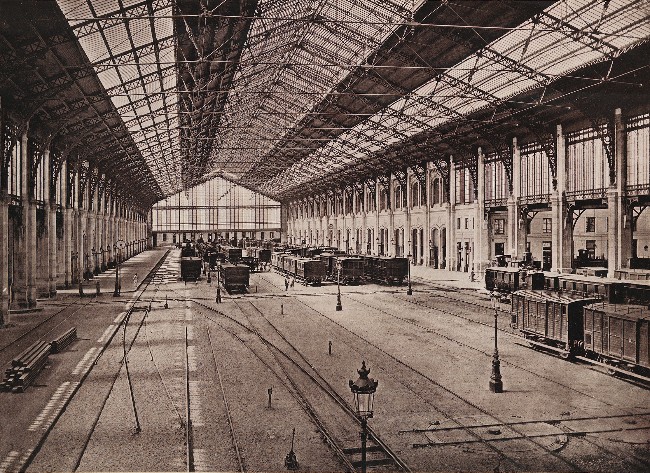
Gare d’Austerlitz in 1883. Public domain
Less well-known, his victory against Austria in the 1809 Battle of Wagram, fought outside Vienna in July 1809, was the beginning of the end of this second Franco-Austrian war. Wagram station (Line 3) is named after this decisive victory, one in which Napoleon commanded a bigger army than in any previous battle, comprising some 154,000 troops. This battle has been called “the last of his military miracles” and there were some headline defeats to follow. Waterloo station, it can be noted, is in London, not in Paris!
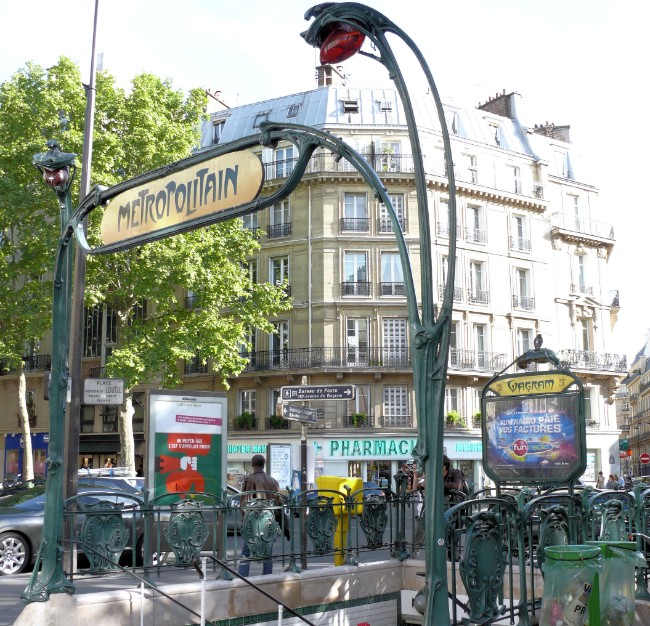
The Wagram metro station, with the distinctive Art Nouveau entrance by Hector Guimard. Photo credit: MOSSOT/ Wikimedia commons
A number of other metro stations are named after people connected to Napoleon. Of those who fought alongside him, two illustrious names stand out. Christophe de Michel du Roc, remembered in the Duroc station (Lines 10 and 13), gained his military reputation in the Italian campaign and at Wagram, and enjoyed the full confidence of Napoleon for his courage and integrity. After his death he was much-honored, not least by having his ashes interred alongside Napoleon’s at the Invalides and his name engraved on the Arc de Triomphe.
Général Jean-Baptiste Kléber has both the Kléber station (Line 6) and the Avenue Kléber, one of the 12 avenues leading away from the Arc de Triomphe, named after him. Kléber had fought with distinction during the French Revolution and it was to him that Napoleon awarded the supreme command of the troops he left behind in Egypt.
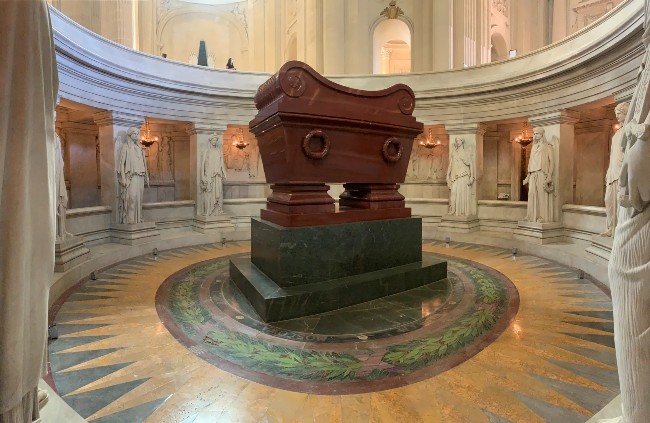
The tomb of Napoleon Bonaparte at Invalides. Photo credit: Hellodavey1902/ Wikimedia Commons
At least another 10 metro stations have connections to men who fought alongside Napoleon. Mouton-Duvernet, Cambronne and Pernety may not be household names today, but they have stations named after them, on lines 4, 6 and 13 respectively. Antoine Drouot, reputed to be happy to serve for “40 sous a day” and François-Louis de Morland are honored in hyphenated station names – Richelieu-Drouot (Lines 8 and 9) and Sully-Morland (Line 7) – there being no particular connection between them and the names with which they are paired. The same applies to Claude Lecourbe and Gabriel Molitor, remembered at Sèvres-Lecourbe (Line 6) and Michel-Ange-Molitor (Line 9).

Sèvres-Lecourbe metro, looking towards Pasteur station. Photo credit: Geralix/ Wikimedia commons
Two more of Napoleon’s troops were awarded the coveted Légion d’Honneur for their exemplary conduct, Pierre de Pelleport, the first ever recipient and Rémy Isidore Joseph Exelmans, known as “The Lion of Rocquencourt” and tasked with collecting enemy flags and presenting them to Napoleon. Pelleport station is on line 3 and Exelmans on line 9. A story known to French schoolchildren is that of Victor Fay de Latour-Maubourg, honored at La Tour Maubourg station, (Line 8) who lost a leg at the Battle of Leipzig and comforted his distraught manservant with the words: “Console yourself, my friend, the harm is not so great for you. After all, you will now only have one boot to shine.”
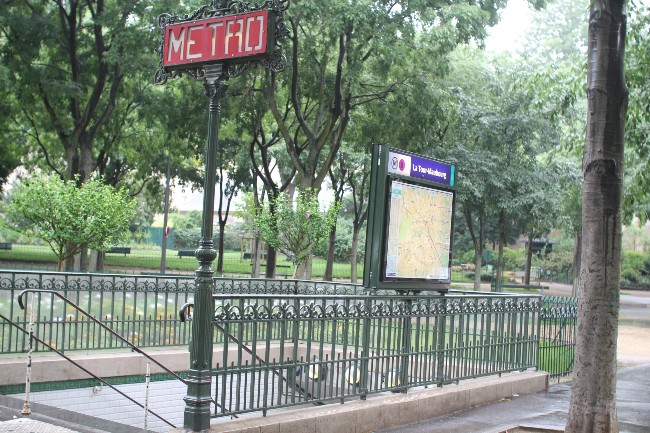
La Tour Maubourg metro station. Photo credit: Milliped / Wikimedia Commons
This honor is not exclusive to military men. On Line 6 is the Corvisart station is named after Napoleon’s personal doctor, Jean-Nicolas Corvisart, who accompanied the emperor on campaigns. Corvisart was said to be one of the few people who could rebuke Napoleon and get away with it. Although distrustful of medics in general, Napoleon respected his favorite’s integrity, remarking that “I do not believe in medicine, but I believe in Corvisart.”
Lamarck-Caulaincourt on Line 12, is named for Armand, the Marquis of Caulaincourt who was the French ambassador to Russia, a man in whom Napoleon is said to have confided on sleigh rides and whom he described as “a man of heart and righteousness.” And finally, the Breguet-Sabin station on Line 5 is named for Abraham-Louis Breguet-Sabin, the founder of a watch company which is still an upmarket brand today. Napoleon bought a travel clock and one of his newly invented “self-winding watches” from him before he left for Egypt and went on to become a loyal customer.

The Corvisart metro station in 1906. Public domain.
Napoleon thought a great deal about fame and reputation and one of his much-quoted remarks is that “Glory is fleeting, but obscurity is forever.” Perhaps we have mixed feelings about his “glory,” but we can agree that he has certainly avoided obscurity. He is everywhere in Paris, not just in the great monuments, but also all over the metro system, even though its first line was not opened until 1900, almost 80 years after his death. Think of him next time you pass through Pyramides, Wagram, the Gare d’Austerlitz or any of “his” stations.

The Emperor Napoleon in His Study at the Tuileries, Jacques-Louis David, 1812. Public domain.
Lead photo credit : The Coronation of Napoleon by Jacques-Louis David (1804). Public domain


